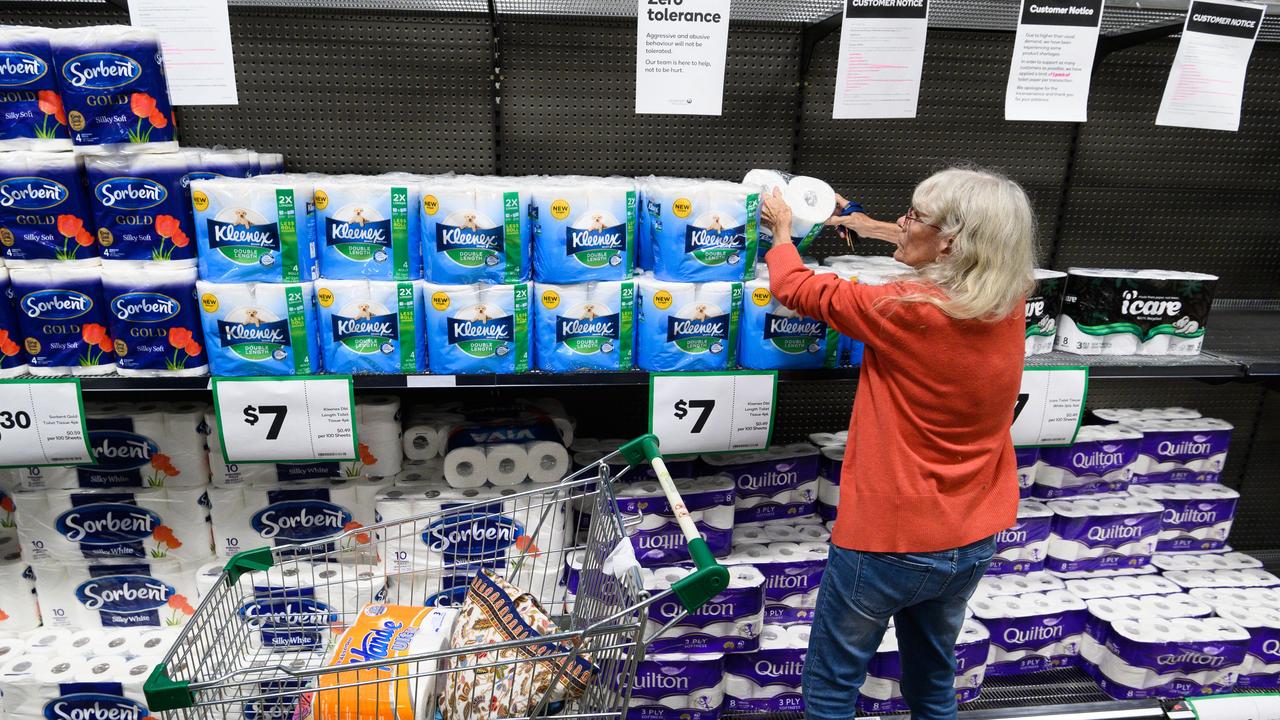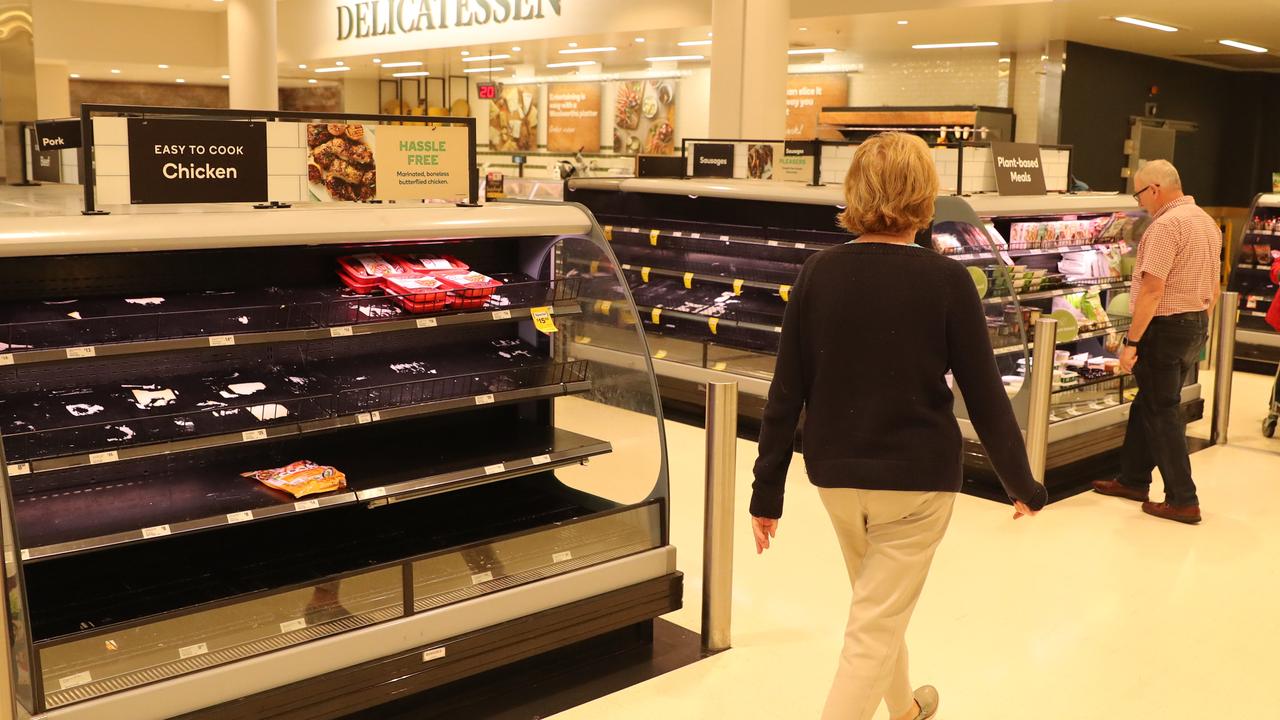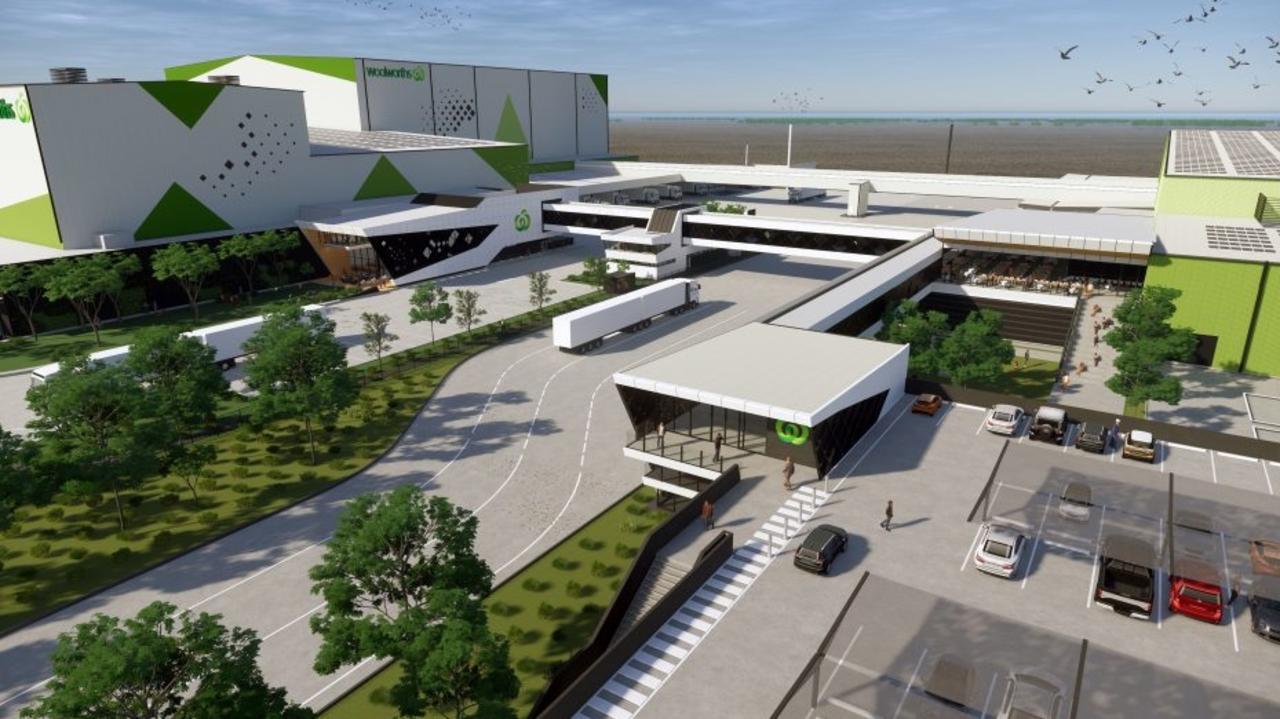Woolworths profit results reveal hidden cost of panic buying
Crowds of shoppers at the start of the virus pandemic created a sales boom for supermarkets. But there was a downside as well.
The past few months have been the biggest shopping period in Australia’s history as panicked buyers stripped shelves amid fears of shortages when the coronavirus hit Australia.
Supermarkets experienced boom times as customers queued outside stores and piled their trolleys up to the point where buying limits had to be enforced.
All this activity would normally mean a big jump in the bottom line for supermarkets, but that’s not the case Woolworths revealed in a call to investors this week.
The supermarket giant will be reporting financial year profits of $3.2 billion to $3.25 billion, which is below last year and below market expectations.
That number gets even lower when you consider the “significant items”. These are once-off costs of $591 million that will drag down earnings even more. Shares in Woolworths – the big retail conglomerate that owns Woolies supermarkets, Dan Murphy’s and Big W – fell 0.76 per cent on Tuesday.
So why did this time of bounty turn into a profit downturn for Australia’s biggest supermarket?
Some of it is because Woolworths has Metro stores in empty CBDs which are losing money fast. But largely it is the following trifecta of reasons.

COVID COSTS
We were shopping a lot during the crisis, with food sales at Woolies supermarkets up more than 10 per cent. Trapped in our homes, we bought a lot more stuff, and we sometimes paid more for them because when the basic products ran out we bought fancier versions.
“If (customers’) value product wasn’t available they would trade up,” said Woolworths CEO Brad Banducci in a call with investors on Tuesday.
But it also cost supermarkets extra to stay open.
Mr Banducci said the company felt it had to be “very conservative”, including putting on extra cleaning staff, allocating greeters to wipe trolleys, hiring extra casuals to cover expected extra absences, people to manage checkout queues and security guards to break up fights between panic buyers in the toilet paper aisle, “given the early violence we saw”.
All those extras costs added up to about $275 million, Woolworths said, which was a drag on profits.

The company’s costs of COVID-19 will be even higher when you include bonuses going to staff. Woolies full-time staff are getting $1000, $750 in Woolworths shares and a $250 gift card. Part-timers get less, and casuals who joined prior to COVID-19 get $100.
ROBOTS REPLACING STAFF
Another big cost Woolies is paying this year is related to two new warehouses they are building in Sydney. Instead of having three locations for warehousing in NSW and Victoria, they will build two new warehouses in one spot.
One of those warehouses will be fully automated, and while that will save costs in the long run, in the short term it means 1350 redundancies. Woolies put aside $176 million to pay for staff who will be losing their jobs.
The new warehouses sound pretty cool though. They are able to reduce the amount of space Woolies need from 175,000 square metres to 75,000 square metres; they will be on a rail line, so they take 26,000 trucks off the road; and no human hands will have to touch the products between arriving at the port in Australia and arriving in the supermarket.

BACK PAY
Woolworths have also had to set aside money to repay thousands of workers who were not paid what they were owed.
In October last year Woolworths revealed it had underpaid nearly 6000 employees in the past nine years, after a review triggered by a new enterprise agreement.
The cost this year for paying back staff is $185 million. Of that, $105 million is for salaried staff who work in Woolies pubs and are on the hospitality award. While retail staff get four years of back pay, they will get back pay for the prior two years.
These mistakes makes the total amount Woolies underpaid their staff a whopping $390 million.
“It’s not something we feel particularly good about,” said Mr Banducci.
Woolworths are not alone in failing to pay their staff correctly.
Coles Group, the owner of Coles, announced in February it would set aside $20 million to cover its underpayment of staff over a six-year period, a move which led Attorney-General Christian Porter to issue a firm warning to businesses.
“Get your house in order,” he told reporters at the time.
It seems to me if we want to deter this sort of behaviour we should ramp up the consequences.
Jason Murphy is an economist | @jasemurphy. He is the author of the book Incentivology.




